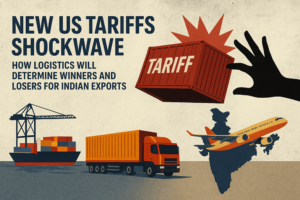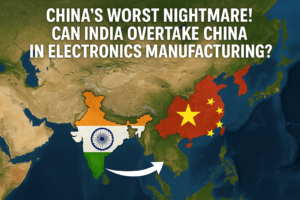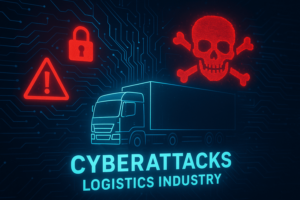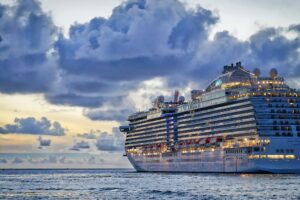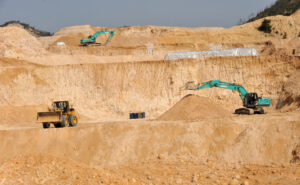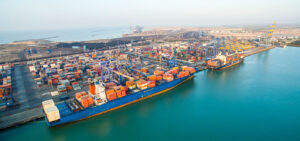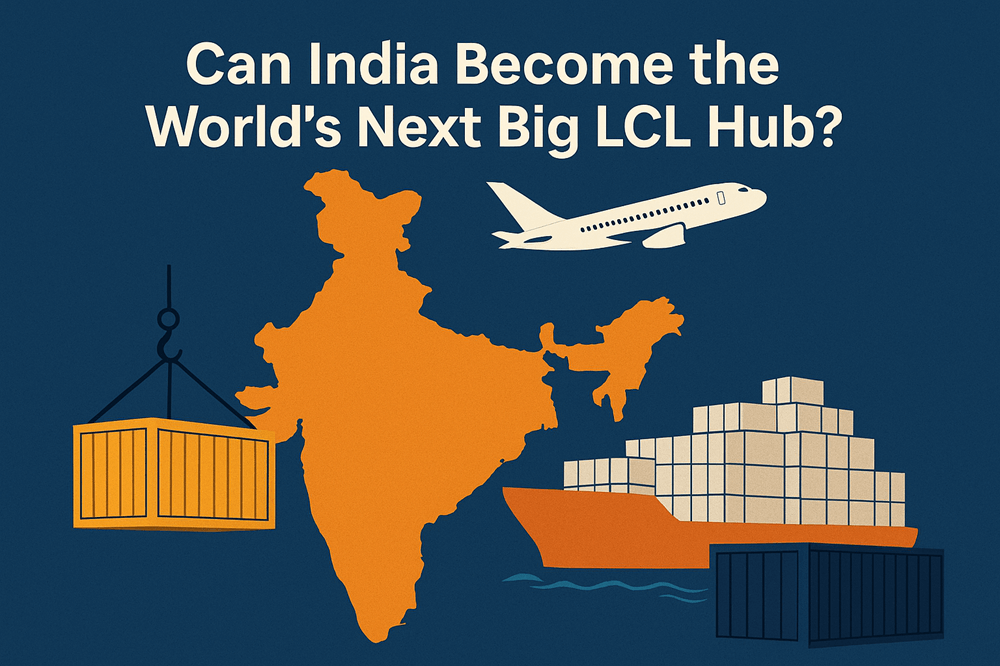
What if India’s ports could rival Singapore and Hong Kong as Less-than-Container Load (LCL) consolidation powerhouses? With bold port upgrades, a vast rail network, and 2025’s customs reforms, India’s LCL potential is skyrocketing—but is it enough to compete globally?
Let’s dive into the evolving landscape of India’s LCL logistics and how it’s reshaping global trade for exporters, MSMEs, and logistics providers.
LCL: The Backbone of Inclusive Trade
LCL (Less-than-Container Load) shipping allows multiple exporters to share a single container—crucial for MSMEs and small-volume exporters who can’t fill a full container load (FCL). LCL services open up global trade to smaller players by:
- Lowering shipping costs
- Expanding market reach
- Reducing inventory burdens
As global e-commerce and SME exports grow, LCL consolidation is becoming a strategic focus for logistics companies and national governments.
India’s Ports Are Getting Global-Ready
India’s push toward becoming an LCL hub is backed by impressive upgrades:
- Nine Indian ports now rank in the world’s top 100 (up from 3 in 2020)
- Container dwell time is down to just 3 days, beating the US and Germany
- Vessel turnaround time at Indian ports averages 0.9 days, faster than Singapore, USA, and Australia
The new Vadhavan Port in Maharashtra, three times the size of JNPT or Mundra, is poised to be among the top 10 container ports globally, with the capacity to handle mega-vessels and support world-class LCL operations.
LCL Momentum Is Building in India
🧱 Case in Point: ICD Ankleshwar, Gujarat
Allcargo Logistics, in partnership with CONCOR, launched India’s first LCL consolidation service at ICD Ankleshwar. This inland container depot-based service:
- Reduces freight costs for MSMEs
- Cuts inland transit delays
- Leverages rail connectivity to ports like Mundra and Nhava Sheva
This move mirrors Singapore’s multi-country consolidation model, enabling smaller exporters from Gujarat’s industrial belts to reach global markets efficiently.
Comparing Global LCL Hubs
| Port | Key Strengths | LCL Potential |
| Mundra | India’s largest private port, strong inland links | High |
| JNPT (Mumbai) | Strategic location near western industrial clusters | High |
| Chennai | Handles 18.6% of India’s container volume | Growing |
| Visakhapatnam | Fast cargo handling, modern infrastructure | Emerging |
| Vadhavan | Mega-port under construction | Very High (Planned) |
Rail is India’s Secret LCL Weapon
India’s 68,000 km rail network moves 27% of national freight. The Western and Eastern Dedicated Freight Corridors (DFC) offer high-speed, high-capacity rail links between:
- Industrial hubs
- Inland Container Depots (ICDs)
- Major ports like Mundra, JNPT, and Chennai
These corridors slash transit time and enable cost-effective LCL consolidation.
For instance, Allcargo’s LCL service at ICD Ankleshwar benefits from CONCOR’s nationwide rail backbone, connecting Gujarat to global shipping routes with greater speed and flexibility.
Customs Reforms of 2025: A Game Changer
India’s customs transformation is removing red tape and streamlining international logistics:
Key 2025 Reforms:
- Direct Port Delivery to importer premises
- Automated clearance & digital communication
- Single Electronic Bond (SEB) replacing multiple customs bonds
- Automated refunds & digital document submission
These measures improve transparency, reduce paperwork, and make LCL operations faster, cheaper, and more efficient—crucial for global competitiveness.
Economic Impact & Investment Surge
In FY 2024–25:
- 962 acres of port land were allocated to industry
- ₹7,565 crore in income projected from port-linked businesses
- Private investments at ports tripled in two years, signaling investor confidence
These developments show India’s PPP-driven logistics ecosystem is maturing rapidly—ready to attract global shipping lines and LCL traffic.
Can India Really Rival Singapore or Hong Kong?
While Singapore and Hong Kong lead with:
- Real-time digital tracking
- Free port status
- Warehousing that cuts costs by 35%
India is catching up with:
- Faster turnaround times
- Modern port infrastructure
- Multimodal logistics corridors
- Digitally integrated customs systems
The result? A fast-evolving ecosystem ripe for LCL growth.
India’s LCL Leap Is Real
India is on the brink of a logistics revolution. With smart port development, bold policy changes, and rail-powered LCL capabilities, India is well-positioned to become a global LCL hub—one that’s inclusive, tech-forward, and scalable.
#IndiaLCLHub #ICDAnkleshwar #PortVadhavan #IndiaPortDevelopment #LCLConsolidation #IndianLogistics2025 #MultimodalTransportIndia #CustomsReformIndia #MSMEExports #GlobalTradeIndia



